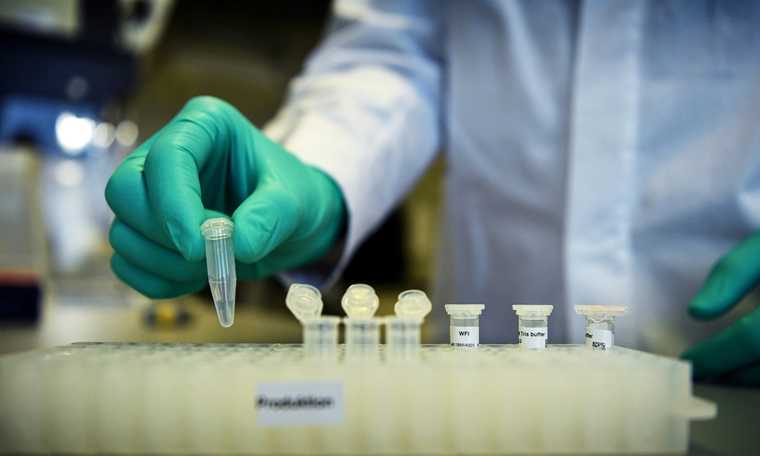By: V4 Agency
The number of coronavirus deaths per 1000 inhabitants is currently the highest in Slovakia, according to data published by the Johns Hopkins University. At the end of last year, the country launched a nationwide testing programme, unique in the world. However, despite these efforts, the country with a population of 5.5 million people appears to have ended up in dire straits. Here is V4NA’s roundup of the road leading there.
Prime Minister Igor Matovic came up with his “national testing instead of national lockdown” strategy in mid-October as he believed testing was the only viable alternative to issuing a nationwide lockdown which would devastate the economy. The nationwide testing programme was backed by all four parties of the ruling coalition.
In October, Slovakia became the first country in the world to introduce national testing. The V4 country was going against the current, as most every country opted for reintroducing lockdowns when the second wave of the coronavirus hit.
The first round of nationwide testing took place on 31 October and 1 November. Several countries helped in the screening effort, including 50 experts from Austria and 200 from Hungary. In the end more than 3.6 million people were tested in two days, of whom roughly 38,000 tested positive and were quarantined for two weeks.
One week later, on 7 November, the second round of testing was launched in those districts where the positivity rate had been greater than 0.7 per cent in the previous round.
During the testing, a national curfew was in place – from 24 October to early November – shutting the country down briefly. As a result, the number of new infections dropped in one week.
PM Igor Matovic called the two rounds of nationwide testing a success as registered cases fell by 74-88 per cent in the regions hardest hit by coronavirus pandemic.
“To contain the epidemic, we need a new round of nationwide testing,” the Slovak premier said after a government meeting on 19 November. He preferred to complete it ahead of the holiday season, but the proposal was eventually rejected.
The idea of another bout of mass-testing was not well received by the population either, and President Zuzana Caputova also campaigned strongly against it. Capitalising on people’s general aversion, Economy Minister Richard Sulik sabotaged the procurement of tests, causing the plan to fail, according to PM Matovic.
As the favourable effects of the first wave of testing combined with lockdown ran out, the case number began to rise again, only more sharply this time.
Slovakia’s mass vaccination programme against the virus began on 26 December, with well-known infectologist Vladimir Krcmery receiving the first jab, followed by several members of the government the next day.
However, by early January, the mutant British strain of the virus also reared its head in the country, which many believe is to blame for Slovakia’s current cusp of crisis. Shortly after announcing that health authorities have detected a new strain, Mr Matovic warned that it may spread all across the country.
The presence of the variant provided another opportunity for PM Matovic to confront his economy minister. According to Mr Matovic, Sulik is responsible for thwarting the roll-out of nationwide testing weeks in advance, and is thus responsible for thousands of deaths and billions in economic damage.
Slovakia, while initially leading the pack in terms of effective pandemic management in the fall, has now reached the point of sliding to last place. The country’s healthcare system has been drastically overburdened and is now grappling with a shortage of doctors and nurses. In order to mitigate the situation the Slovak government on Wednesday, activated the European Union’s civil protection (ECHO) mechanism and requested medical personnel from EU member states to combat the disease.
The severity of the situation in Slovakia is also evident in the fact that crematoria in the country can no longer keep up with demand. There are currently six operating in Slovakia, 24 hours a day. Although the process of cremation cannot be accelerated, the number of dead is, according to Uj szo.
The president of the Slovak Association of Funeral Homes and Crematoria (SAPaKS) cited an average of 100 deaths per day. According to Ladislav Stríz, they have never experienced such numbers of deceased and such burdens on the system. Due to the critical situation, representatives of funeral companies and crematoria met with the national crisis management staff on Thursday.
Ahead of the meeting Interior Minister Roman Mikulec underlined that more refrigerated trucks are likely to be ordered and distributed to crematoria. “Something needs to be done because the deceased are starting to accumulate in the crematoria,” the politician said.
Meanwhile, contradictions have surfaced within the government over vaccine procurement. A proposal to secure the Russian Sputnik V was discussed at Thursday’s government meeting, but a member of the ruling four-party coalition, Za ludi, vetoed it, sweeping Sputnik V off the table. PM Igor Matovic said he, “regretted the party’s attitude,” however, no matter how much he was inclined, he refused to comment on the decision, saying “the people can draw their own conclusions.”
Despite the decision, Slovakia will be purchasing Russian jabs. At a press conference on Saturday, the prime minister also announced that he had sealed a deal with Russia to supply two million doses of the Sputnik V vaccine by the end of June. Mr Matovic also further criticised the previous rejection of the Russian vaccine, stressing that its use was authorised by 29 other countries in addition to Hungary.
In the middle of the week, Hungary, Poland and Austria offered assistance in helping Slovakia combat the epidemic.
